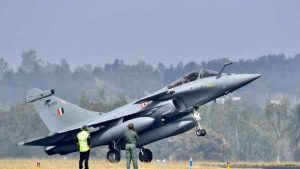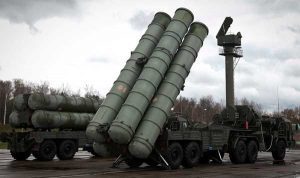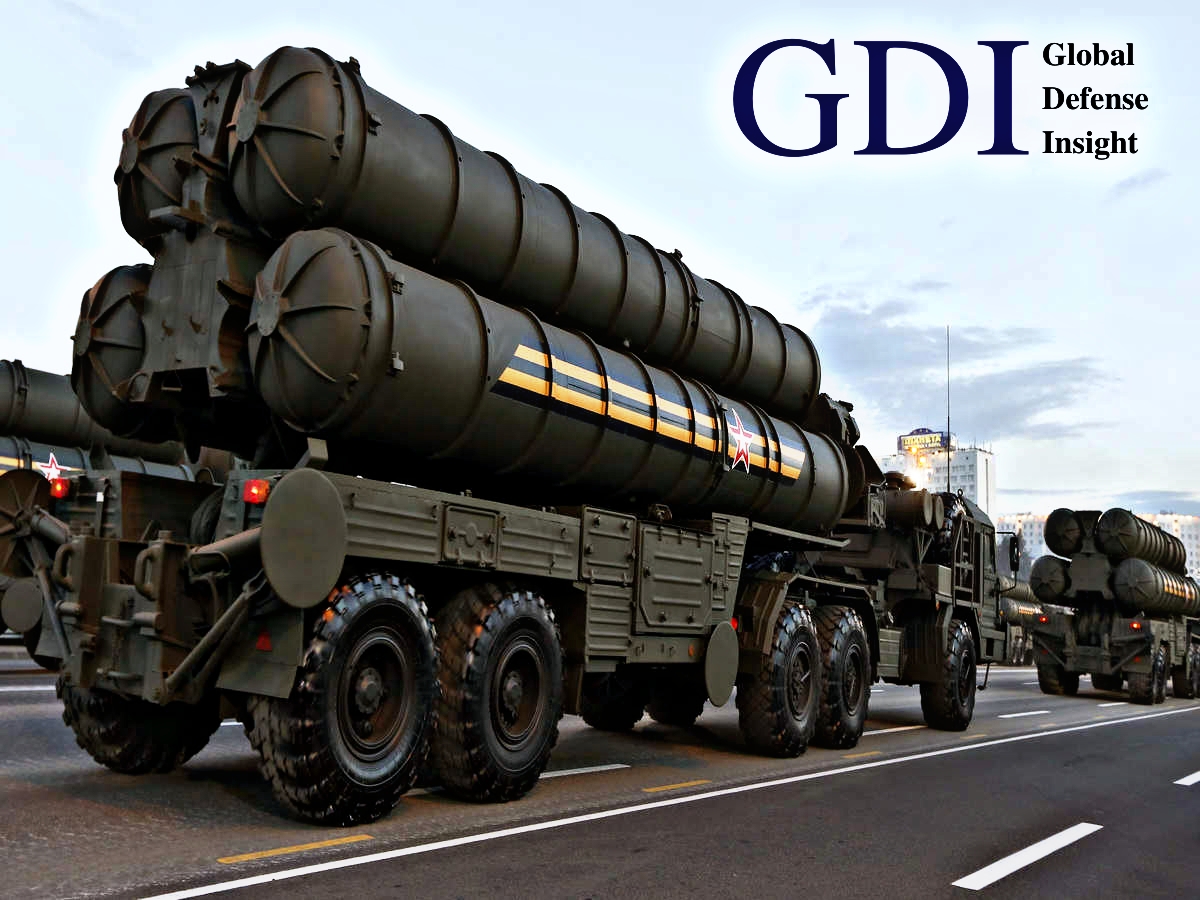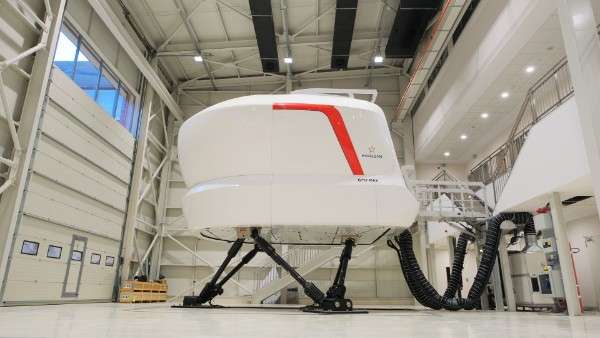Indian government quietly approved a $5.43 Billion deal to buy 5 batteries of top-notch S-400 Triumf air defense missile system (NATO name: SA-21 Growler) from Russia, just before Russian President Putin’s 2018 visit.
A deal to buy five S-400 systems was inked between Moscow and New Delhi during the 19th edition of the Russian Annual Bilateral Summit in New Delhi on October 5, 2018. Its delivery is expected to begin by the end of 2021.
Read more: Rafale Omnirole Fighter Aircraft: Detailed Insights
This deal clearly disrupts the balance of power in South Asia because current military buildups by India pose multiple challenges to Pakistan as this state-of-the-art system can allegedly shoot down enemy fighter jets, drones and cruise missiles up to a range of 400 KMs. Its radar has a reported range of up to 600 KMs. This system is already operational with Russian & Chinese military.

Rafale omnirole aircraft assigned to Indian Air Force
One other country which is worried of this deal other than Pakistan is United States of America because USA is trying to counter Russia’s actions in Crimea and its involvement in the 2016 elections by putting it under CAATSA (Countering American Adversaries through Sanctions Act).Turkey & China are already under sanctions of USA due to S-400 defense deals with Russia.
Read more: Feminism in Future Afghanistan: the Two Perspective
During the visit of Defence Secretary Lloyd Austin to India in February 2021, He raised the issue of S-400 deal with PM Modi and expressed the reservations of US on the deal and hinted that it will lead to sanctions like US did with Turkey.
Table of Contents
ToggleImplications of the Indian S-400 on Pakistan:
Being able to engage hostile aerial platforms at a range of 400 KMs makes S-400 a formidable weapon system. Indian Air Force can engage PAF’s aircrafts well inside Pakistani territory gives it a potent offensive weapon. There are three stages of its impact on Pakistan:
1. Peace Time,
2. Post Incursion (Operation Swift Retort)
3. War Time.
During peace, Pakistan will have to deal with the outcome of the Indian S-400. Air raids by the Pakistan Air Force on Indian legitimate targets by would become very difficult due to induction of S- 400 with 4.5 Generation French Rafale jets; Brahmos equipped Su-30 MKI, Israeli manufactured A- 50EI Phalcon Airborne Early Warning & Control (AEW&C) aircrafts which are complimented by DRDO NETRA AEW&CS.
Whenever Modi’s BJP Government came under immense domestic pressure due to poor governance or elections, to divert the attention of its masses, it blamed & bashed Pakistan of fake terrorism charges then organized false flag operations like Uri, Pulwama, etc. and then conducted limited military aggression against Pakistan.
Follow us on Twitter
These operations helped Modi’s BJP gain popularity in the national front but it harmed its reputation in the international community a lot. After this purchase, Indian civil-military leadership might assume that Pakistan Air Force will never be able to respond to IAF as it did on the morning of 27th February 2019 after the Balakot airstrike.
This assumption will further encourage them to conduct more military raids against Pakistan on a restricted scale whenever there is a false flag operation. Pakistan armed forces will have to be on standby to counter and retort to this imminent threat.
Indian military strategy planners would have to keep the nuclear deterrence model in mind while deploying S-400 because of the nuclear scenario which is prevalent between India and Pakistan; also Pakistan has a first use policy.
The S-400 could provide India a shield against future PAF airstrikes in response to any Indian border transgression. Pakistan has established a credible & comprehensive nuclear deterrence capability in South Asia and can wreak unbearable damage to the Indian military and its government if it lurks the country’s primary interest in any way.

If in future India manages to cause serious fatalities by conducting another surgical strike, the ability of PAF to reply to India by following Pakistan’s Quid Pro Quo Plus policy (QPQP) would have to provide for the Indian air defense shield which will include S-400 and Rafale both.
In the case of wartime if Pakistan is unable to hold and deter Indian transgressions by conventional & orthodox means because of the defensive shields by S-400. The deployment of nuclear weapons will rise exponentially in case of conflict. During war between India and Pakistan, the S-400 system would restraircraft deployments & sorties of it aircrafts, particularly the support fleet like the AEW&Cs, Electronic warfare aircrafts like Dassault Falcon 20F, Aerial refuellers, transport fleet & most importantly C4ISR (Command, Control, Communications, Computers, Intelligence, Surveillance and Reconnaissance) Platforms.
Deployment and planning missions using these platforms would have to be cautiously planned to keep these platforms out of the range of S-400. An extreme war between nuclear-armed neighbors is not likely in the near future but it cannot be ruled out. In such a case, the Indian S-400 system, apart from providing a solid defensive shield to the majority of the Indian critical assets, can also shoot down PAF attack and support platforms well inside Pakistani airspace. The liberty to operate its aircraft for the PAF even within its geography would be restricted during the conflict with India and our interceptors will also be vulnerable when S-400 will be deployed with Indian AEW&Cs.
Ultimately PAF will not be able to protect its critical assets and sites like Supporting the army’s offensive against India or Protecting sea lanes of communications during the war. So to neutralize this threat PAF will have to come up with a potent plan otherwise rest of the forces will be direly affected.
During these circumstances, if the S-400 batteries help the Indian Air Force to establish a high degree of jurisdiction on the Pakistani airspace which includes battlefields, sea lanes communication, and EEZs (Exclusive Economic Zones).
As claimed by the manufacturer, the S-400 Triumf has a maximum range of 400 KMs while using 40N6E missiles theoretically but in reality, it would be far more complicated and difficult for the Indian Air Defence units because of difficult terrain and geography between both countries. All BVR (beyond visual range) weapons should be able to differentiate between friend and foe on the battlefield because both PAF and IAF’s Aircraft will be flying sorties.
Indeed the S-400 is a formidable air defense platform but avoiding fratricide will be a major challenge for both because electronic methods of identifying friendly platforms are never perfect and can be tricky like the IAF encountered during Operation Swift Retort by accidentally downing its own aerial platform due to human error caused by Israeli Spyder SAM stationed at Srinagar Airfield, and even the mighty USAF have strict rules of engagement when enemy aircraft are present. The long-range capability would limit the free use of the S-400 to avoid fratricide.
The views expressed in the article are the author’s own and do not necessarily reflect the editorial policy of Global Defense Insight.

Abdul Wassay
Abdul Wassay is a Research Assistant at the Centre for Aerospace and Security Studies, Lahore. He can be reached at info@casslhr.com.













